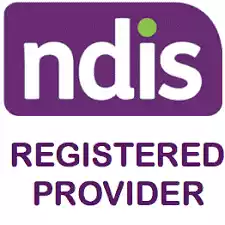How to become NDIS Certified
A Comprehensive Guide to Becoming NDIS Certified
The National Disability Insurance Scheme (NDIS) is a government-funded program that provides vital support and services for people with disabilities in Australia. There are over 600,000 Australians who partake in the NDIS Program. Over 50% of NDIS Participants are receiving government support from government. As a provider of disability and support services, becoming NDIS certified is essential to ensure you are meeting the regulatory requirements and delivering high-quality services to your clients.
To achieve NDIS certification can be a complex and challenging process, especially for those who are unfamiliar with the requirements and processes involved. In this blog post, we will provide you with a step-by-step guide on how to become NDIS certified so that you can continue to help those in need.

Step 1: Understand the NDIS Quality and Safeguards Commission (NDIS Commission)
The NDIS Commission is the independent New South Wales and Commonwealth agency responsible for monitoring quality of services within the NDIS, investigating complaints and concerns, and ensuring compliance with NDIS Practice Standards.
To get started, visit their website and familiarize yourself with the NDIS Commission, the standards and requirements, as well as the process of becoming a NDIS provider. Make sure you have a clear understanding of the expectations before applying for NDIS certification. Please make sure you obtain a copy of the NDIS Practice standards and familiarise yourself with the standard.
Step 2: Assess your organisation’s readiness
To become NDIS certified, NDIS providers must meet the requirements set out in the NDIS Practice Standards. Perform a self-assessment of your organisation to identify any areas that need improvement before you proceed with the official certification process.
The NDIS Commission provides a self-assessment tool that can help you identify areas of improvement and a guide to the NDIS Practice Standards. If you need additional help, you can also seek the guidance of NDIS consultants to support you through the process.
It is important that you complete this step in order to give yourself the best understanding
of any potential gaps in your policies and processes.

Step 3: Submit an application
Applying is the first real step to becoming an NDIS provider. You should present relevant documentation that aims to prove that your organisation is fit to practice and capable of achieving the standards set by the NDIS Commission. Such documents include evidence that you have:
- Effective communication systems in place
- Compliant policies and procedures
- Proper staff training and development programs
- Adequate financial stability
An NDIS consultant can support you through the application process and ensure that all required information is provided.
Step 4: Commence gap analysis
A gap analysis will help identify areas of your organisation’s processes and practices that need improvement to comply with NDIS Standards. Areas of major non-conformances will be identified, and a plan on how to address these non-conformances will be created.
A gap-analysis report will be generated, setting out the strategies and processes necessary for your organisation to achieve full compliance with the NDIS Practice Standards.
Step 5: Quality audit
The final stage of the certification process is conducting a quality audit. NDIS consultants will perform an on-site audit to assess your organisation’s ability to deliver services that comply with the NDIS Practice Standards. Upon a successful quality audit, you will be granted NDIS certification and become an NDIS provider.
Types of Audits:
Verification Audit
This is essentially a desktop audit and mostly covers low-risk service providers. An initial Audit will take place once we can agree on a date. The second “recertification audit” will take place about 30 months after the first audit. Click here to view the items that will be covered during the audit:
Risk management
- Complaints management and resolution
- Incident management
- Human resource management
Certification Audit:
Stage 1 is a desktop audit and the auditor will want to ensure there is a documented system in place and Stage 2 will ensure implementation. Click here to view the requirements the auditor will cover during these audits.
Rights of participants and responsibilities of providers
- Standards relating to the rights of participants and the responsibilities of providers
- Person centred supports
- Individual values and beliefs
- Privacy and dignity
- Independence and informed choice
- Freedom from violence, abuse, neglect, exploitation or discrimination
- Provider governance and operational management
- Standards relating to provider governance and operational management
- Governance and operational management
- Risk management
- Quality management
- Information management
- Complaints management and resolution
- Incident management
- Human resource management
- Continuity of supports
- Provision of supports
- Standards relating to the provision of supports to participants
- Access to supports
- Support planning
- Service agreements
- Responsive support provision
- Transitions to and from a provider
- Support provision environment
- Standards relating to the provision of supports to participants
- Safe environment
- Participant money and property
- Medication management
- Waste management
Provisional Audit:
A Provisional audit applies to those who have entered the NDIS Market and currently do not have any participants. This audit is aimed towards determining how well the organisation is set up to service participants in the future
Mid Term Audit:
A mid-term audit is required to commence within 18 months after the NDIS has approved the application. The mid-term audit reviews the Governance and Operational Management practice standards as well as various other focused areas depending on the previous audit report. The mid-term audit is an on-site assessment to evaluate the effectiveness and implementation of the provider’s system to meet the requirements of the applicable modules of the practice standards. Participant interviews are also conducted as a part of the mid-term audit.
Becoming NDIS certified is a vitally important step for any organisation that wants to provide essential services for people with disabilities in Australia. It can be a complex and challenging process, but with the right guidance and support, it can be achieved. By following the steps outlined in this blog post, you will be able to successfully navigate the certification process and become an NDIS provider, giving those in need the essential services they deserve. To find out more about how to become NDIS Certified, Please contact us today
